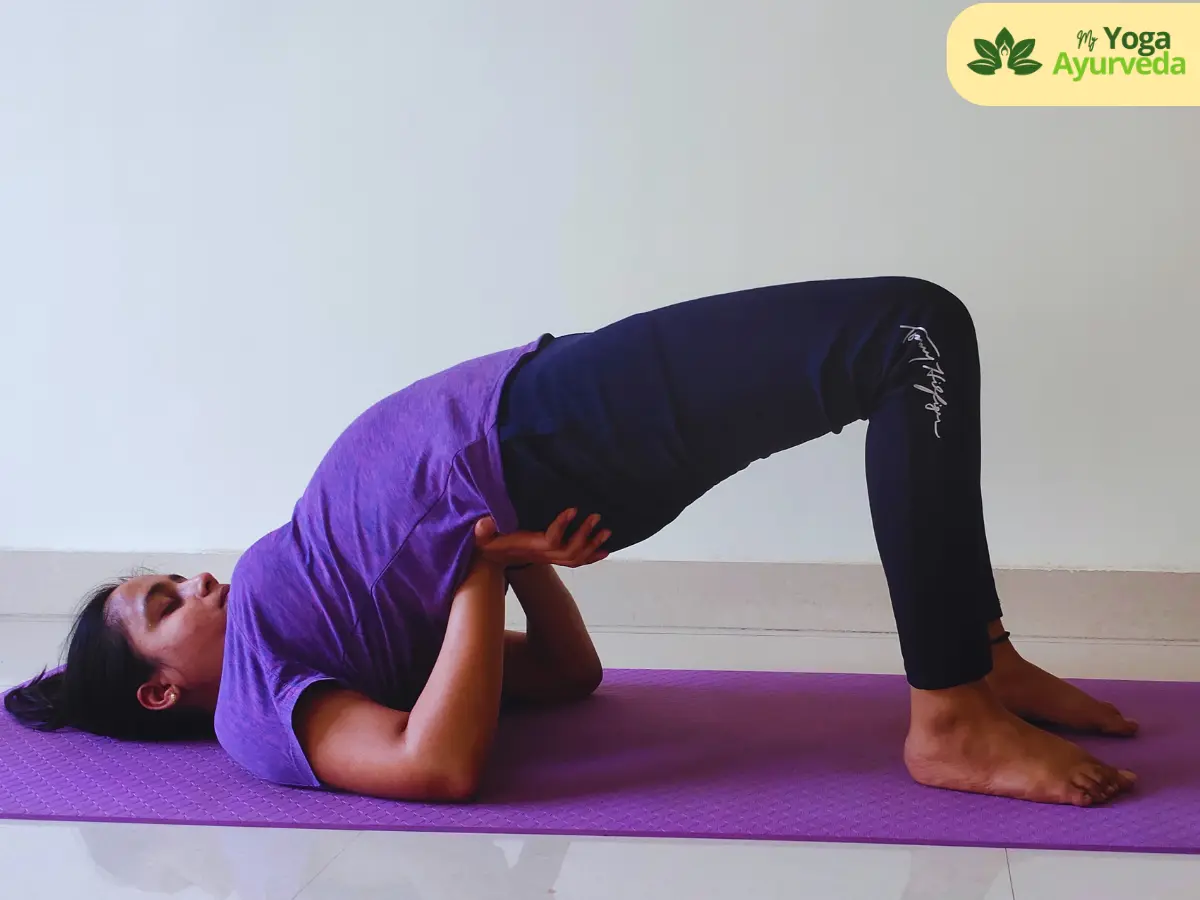
Written by Yoga Mentor Keshav, with facts sourced from Ancient Indian Ayurvedic and Yogic Textbooks, as well as scientific research.
Bridge pose, also known as Setu Bandhasana in Sanskrit, is a yoga posture that involves lifting the hips off the ground while lying on your back. It is a gentle backbend that can help improve flexibility and strength in the spine, legs, and glutes.

Some of the health benefits of Bridge pose include:
Strengthens the back, glutes, and legs: This pose helps to strengthen the muscles of the back, glutes, and legs, which can help improve posture and reduce the risk of injury.
Stretches the chest, neck, and spine: Bridge pose stretches the chest, neck, and spine, which can help improve flexibility and reduce stiffness in these areas.
Relieves tension and stress in the body: This pose can help to relieve tension and stress in the body, which can help reduce feelings of anxiety and promote relaxation.
Helps improve digestion: Bridge pose can help stimulate the digestive organs, which can improve digestion and relieve constipation.
Can alleviate symptoms of menstrual discomfort: This pose can help relieve menstrual discomfort and cramping by improving blood flow to the pelvic region.
How to do Bridge pose ? Step by Step Guide
Here’s how to do it:
Lie on your back with your knees bent and feet flat on the floor, hip-distance apart. Keep your arms alongside your body, palms facing down.
On an inhalation, press your feet and arms down into the floor and lift your hips up towards the ceiling.
Clasp your hands underneath your pelvis and straighten your arms to help lift your chest towards your chin.
Keep your shoulders and feet firmly rooted on the floor while lengthening your tailbone towards your knees.
Hold the pose for 5-10 breaths, then release on an exhalation and lower your hips back down to the ground.
Asana’s are treated first, because they form the first stage of Hatha Yoga. Asana’s make one firm, free from maladies and light of limb – Hatha Yoga Pradipika.
Dos:
Don’ts:
As with any exercise, it’s important to listen to your body and not push yourself beyond your limits. If you have any medical conditions or injuries, consult with a healthcare professional before practicing Bridge pose.
In conclusion, Bridge pose is a beneficial yoga posture that can help strengthen and stretch various muscles in the body while promoting relaxation and reducing stress. By following the proper alignment and breathing techniques, practitioners can safely enjoy the many benefits of this pose, including improved posture, flexibility, digestion, and menstrual discomfort. As with any exercise, it’s important to approach Bridge pose mindfully and with awareness of your body’s limitations to avoid injury or strain.
A: Yes, Bridge pose is a beginner-friendly yoga posture that can be modified to suit different levels of flexibility and strength.
A: Yes, Bridge pose can help to strengthen the muscles of the back, which can alleviate lower back pain over time. However, individuals with chronic or severe back pain should consult with a healthcare professional before practicing this pose.
A: The frequency of practicing Bridge pose depends on your individual needs and goals. Generally, practicing this pose a few times a week can help improve flexibility and strength in the muscles of the back, legs, and glutes.
A: When practiced with proper alignment and breathing techniques, Bridge pose is generally safe for most people. However, individuals with certain medical conditions, such as spinal injuries, should avoid this pose or consult with a healthcare professional before practicing it.
A: To modify Bridge pose, you can place a block or blanket underneath your hips for support or keep your arms by your sides instead of clasping your hands underneath your pelvis. You can also lift your hips only as high as feels comfortable for your body.
A: Yes, Bridge pose can help improve posture by strengthening the muscles of the back, which can help support the spine and reduce slouching.


